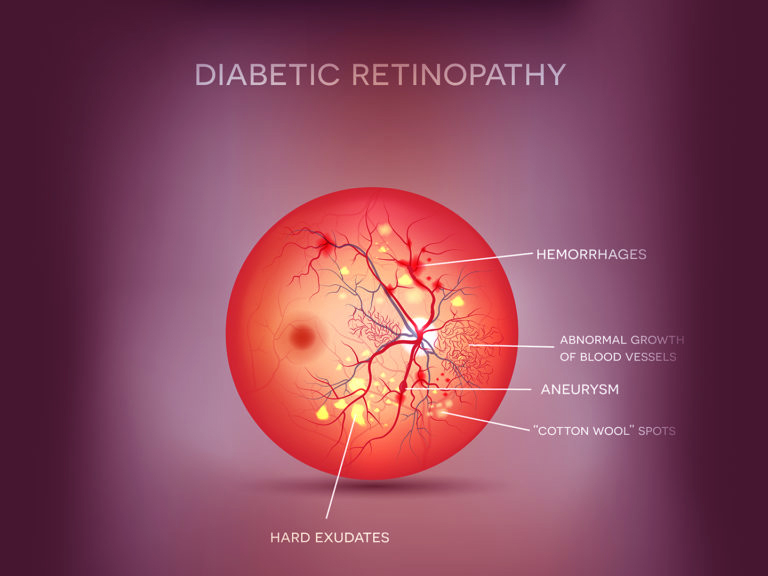Diabetic Retinopathy
DIABETIC RETINOPATHY
Affects blood vessels throughout the body
Diabetes is a disease that affects blood vessels throughout the body, particularly vessels in the kidneys and eyes. When the blood vessels in the eyes are affected, this is called diabetic retinopathy.
The retina is in the back of the eye. It detects visual images and transmits them to the brain. Major blood vessels lie in the retina. When these blood vessels are damaged due to diabetes, they may leak fluid or blood and grow scar tissue thus affecting vision.
When the retinopathy becomes advanced, new blood vessels grow in the retina. These new vessels are the body’s attempt to overcome and replace the vessels that have been damaged by diabetes. However, these new vessels are not normal. They may bleed and cause the vision to become hazy, occasionally resulting in a complete loss of vision. Diabetic retinopathy can also cause your body to form cataracts.
The new vessels also may damage the retina by forming scar tissue and pulling the retina away from its proper location. This is called retinal detachment and can lead to blindness if left untreated.
SYMPTOMS OF DIABETIC RETINOPATHY
- there are usually no symptoms in the early stages of diabetic retinopathy
- floaters.
- difficulty reading or doing close work
- double vision
- if left untreated, severe vision loss can occur
CAUSES OF DIABETIC RETINOPATHY:
Not every diabetic develops it. High in blood sugar levels increase the risk. Generally, diabetics don’t develop diabetic retinopathy until they’ve had diabetes for at least 10 years and if there is poor control of blood sugar levels.
YOU CAN REDUCE YOUR RISK OF DEVELOPING DIABETIC RETINOPATHY BY:
- keeping your blood sugar under control
- monitoring your blood pressure
- maintaining a healthy diet
- exercising regularly
- getting an eye exam at least once a year

DIAGNOSIS OF DIABETIC RETINOPATHY:
Your eye doctor may perform a test called fluorescein angiography. During the test, a harmless orange-red dye called Fluorescein will be injected and will then travel through your body to the blood vessels in your retina. Your doctor will use a special camera to take multiple photographs. The pictures will be analyzed to identify any damage to the lining of the retina or atypical new blood vessels.
TREATMENT FOR DIABETIC RETINOPATHY:
Is through laser (PRP) or surgery depending on the condition of the retina at the time of diagnosis.
If diabetic retinopathy has caused your body to form cataracts, they can be corrected with cataract surgery.
